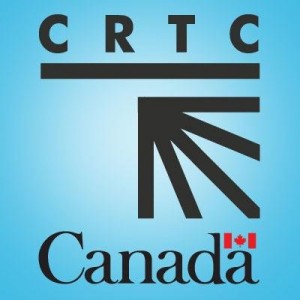Internet, 'Smart' Tvs, streaming have splintered network TV viewing numbers
By
Mark Schadenberg
A
comprehensive review of CanCon on television is underway in Ottawa, including
the funding formula for the buckets of cash allotted for Canuck-based
programming on our nation’s TV stations and networks – community access local
outlets and specialty stations included.
Canadian
content percentages on television are under the microscope. Could there be even
more deregulation on the horizon? As in: only the strong shall survive.
Best
example, is that a Canadian network will pay big dollars to gain the rights to
broadcast the NFL’s Super Bowl, and that particular broadcaster must recoup its
costs through advertising revenue, but then the average Canadian insists on
wanting to watch the so-called American commercials. Naturally, the Super Bowl
would also be deemed as an import show and not Canadian content.
The
CRTC has not seen a major shuffle of its rules and policies since Brian
Mulroney was prime minister and well before his son Ben became prominent as an
entertainment reporter in our nation.
Canadian
Content rules for both radio and television broadcasting is just a minor point
to be put under a magnifying glass to see if there is still if there is some
sizzle to the regulations.
The
stake musical entertainers have in receiving ‘special consideration’ (or not) for
their nationality in receiving air play may also be dissected some day.
The
Canadian Radio-Television and Telecommunications Commission is having its
foundation checked (its defined current playing field of regulations through
public hearings in Ottawa) for any apparent cracks, but also its steel beams,
elevators, floor tiles, office partitions and fibre optics. The optics of all
this analysis is that the federal government of Justin Trudeau and the Liberals
know it’s time to re-write the guidelines pertaining to Canadian Content, but
to also merge all the ideas and concepts with today’s technology including
streaming music and TV shows, watching entertainment on Ipads and telephones,
downloading movies, and enjoying all forms of the arts in ways never thought
about when the Broadcast Act was passed legislation back in 1991.
Radio
As
a former full-time radio person (more than 25 years ago), I remember learning
about the CRTC and its mandate when I was a student at Fanshawe College. I
truly believe that the struggles of Gordon Lightfoot, Hank Snow, Anne Murray,
the Guess Who, Dan Hill, Stampeders, and Joni Mitchell to break through to
international stardom was due in fact to CanCon rules for the airwaves. Radio
stations were and are still required to play a minimum amount of Canadian music
between 6 a.m. – midnight. It is a very good idea as it not only preserves
Canadian heritage it creates the framework for our future too.
Producers
like David Foster, Jack Richardson and Bruce Allen knew that solid talent was
going to be heard once the vinyl came off the assembly line as radio was
required to sift through both the best of the best and the best of the rest.
Today,
talented Canucks such as Avril Lavigne, Alanis Morissette, Bryan Adams, Shania
Twain, Rush, Sarah McLachlan, Shawn Mendes and Celine Dion would have become
superstars on their own talents (in my opinion), but I still believe the many
talented artists with limited success outside of Canada have been assisted by
CanCon rules. There has been a lot of airplay assigned to performers such as
Roch Voisine, Jann Arden, Feist and George Canyon – all quite talented indeed –
that may have been CanCon related / assisted.
TV
TIME
The
debates and hearings currently for the CRTC evolve around all forms of television.
I have a so-called Smart TV which means through our wireless internet in our
house I could watch TV all day long and watch zero from the networks or sports
stations. One popular location on our television, by the way, is YouTube.
The
CRTC guidelines could also see a shuffle in television broadcasting and
requirement for local programming both at the CTV and Global network levels,
the federal pals at CBC, independent specialty stations, and even
community-access shows on local cable outlets.
This
exact debate also occurs in music listening as the number of ears tuned into
commercial radio stations decreases, and more are attached to IPods, satellite
radio and even old fashioned CD’s. Lots of folks have ear buds. Is the commuter
traffic listening to news and talk radio for traffic updates and leaning away
from FM stations playing any specific music genre as its format?
I
grew up listening to radio and then worked full-time in radio for four years.
Radio and television with local content and Canadian programming is very
important. Sometimes, I think the idea of too many radio and TV stations has
also splintered the market too much. We have Love It Or List It: Vancouver.
What is next: Say Yes To The Dress Flin Flon Manitoba.
\
Globe And Mail story excerpt below
Cable subscribers pay into funds from their billing to assist in developing new Canadian shows. This is very evident when you watch Treehouse TV for kids and see a long list of contributors to the programs. It’s a win-win situation.
The
new and (maybe) improved Broadcast Act will likely be introduced in early 2017.
I’m hoping the funds for Canadian shows and stations continue to exist, but don’t
be surprised if more of those dollars are attached to entertainment based on
the internet.
LINKS:
January 2016 story from CBC
CRTC Announcement in 1970
Thinking Real Estate in Oxford County,
contact me today to begin your home hunting process
Mark Schadenberg, Sales Representative
Senior Real Estate Specialist (SRES designation)
Royal LePage Triland Realty Brokerage
757 Dundas St, Woodstock








No comments:
Post a Comment